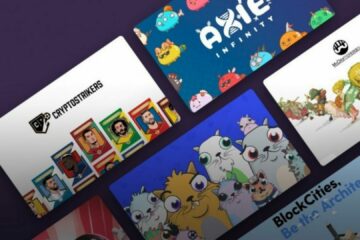Actually, the term NFTs are terribles,” says Christoph Weiss, known as a DJ and musician under the name “Burstup”. Weiss has been dealing with cryptocurrencies, the blockchain for years and, since the appearance of “Non Fungible Tokens” (NFTs), with these too. NFTs can best be thought of as certificates that exist in a blockchain.
It all started around 4 years ago with the first Ethereum-based game “Cryptokitties”. Digital kittens were bred there. Each virtual cat is unique and can be sold by its owner. Many a kitten was already being sold for six-figure amounts.
NFTs hype is not a bad thing
In the meantime, completely different amounts of money are generated with NFTs, for example on the art market. The digital work of art by the artist Mike Winkelmann (Beeple) recently set a new record in the NFT area. The image, a collage of 5,000 individual images, fetched 69.3 million US dollars for the artist in an auction at Christie’s. Another painting of him was resold by an art collector for $ 6.6 million just before that.
Such art projects are, however, a hype for Weiss. “Although hype is not a bad thing. It shows us that this new technology is slowly starting to gain momentum and it could go mainstream. Hypes are part of that, ”says the musician. For him, however, it is “relatively pointless” to buy a certificate for amounts in the millions that proves that you own a certain GIF that has already been digitally multiplied countless times. “That’s not really interesting as an application scenario,” says Weiss.
Lifelong right to a concert seat
For Weiss, NFT projects related to music or virtual game worlds, as well as certifications of property from the “physical world”, such as real estate, are more exciting. “Musicians can sell gold tickets for concerts through NFTs, for example, along with the new album,” says Weiss. “For example, you could grant the lifelong right to a good seat at all concerts. If a gold ticket is on the blockchain, it can be shown anywhere on a digital device, ”says Weiss.
But many of these projects are either at an early stage or not yet invented. Weiss dreams, for example, of a decentralized music streaming platform like Spotify, where artists can use the blockchain to track exactly how long someone has been streaming their songs and receive an adequate share of the proceeds. “There is nothing like it yet,” says Weiss.
Virtual worlds and digital items
With the virtual game worlds, the situation looks different. There are already some niche projects here, as Weiss explains: With Decentraland, for example, there is a virtual world that is like Second Life, and where you buy land. “The server structure is very decentralized and all you can buy there are NFTs. That applies to land, avatars, accessories, ”explains Weiss. “That means that you can take all of these things with you if the platform fails one day.”
Right now, people are already investing a lot of money in skins and clothing for avatars in regular video games, says Weiss. “These assets only exist on the servers of large game companies such as Electronic Arts, Microsoft or Steam. The games are closed worlds, isolated from each other and the game companies have complete control. There is no assurance for users that they will be able to keep the assets they acquire?? says Weiss. That would change with decentralized game worlds.
Marketplaces on the rise
In addition to Decentraland, there are also Cryptovoxels, and here the CryptoWiener project of the Association for Linking and Promoting Blockchain, Art and Culture (VRON) was created with Austrian participation. Such projects have so far only been niche, but there has recently been a real NFT boom in the area of trading platforms.
The largest marketplace, OpenSea.Io, recorded enormous gains. “Millions of NFTs have already been traded there at sometimes insane prices,” says Weiss. “You can also buy said assets there that are for virtual NFT worlds.”
Infrastructure service provider
With wax.io there is also its own blockchain, which was only built for NFTs. The US company is a blockchain infrastructure service provider that wants to simplify the trading of NFTs. Willliam Shatner, known as Captain Kirk in “Star Trek”, used wax.io to trade trading cards from his private moments there. He divided and traded around 125,000 digital photos into 10,000 packages. After only 9 minutes they were all sold out and Shatner still earns a small share of the proceeds every time these trading cards are exchanged.
Why are NFTs so valuable?
Beeple is the most successful crypto artist. Even before the auction at Christie’s, he earned more than 8 million euros with his digital tokens.
However, you cannot hang the digital collectibles on the wall or take them in your hand. Then how can they be valuable? Quite simply: Because people agree that they are worth something – and because they are unique.
Well-known tokens such as CryptoPunks or CryptoKitties exist 1000 times. But neither is like the other. The digital cats differ in terms of their names, fur and eyes, for example.
Ownership of an NFT is written on a blockchain. The advantage: Everyone can see who bought the token: the transaction and ownership are stored in a traceable way.
NFT can also be cryptographically signed and then have a copyright.
What do you do with the digital collectibles (and can you get rich with them)?
You can buy tokens yourself at various online marketplaces – and sell them later. Some you can get for a few euros, for others a few 1,000 are due.
You keep your NFT in a digital scrapbook – in a crypto wallet. This is a digital wallet for Bitcoin, for example.
But it’s not just about ownership: you use some tokens in games or digital worlds.
If you have the right nose, you can earn money with tokens. CryptoPunks, for example, were initially free, today they sometimes change hands for 100,000 euros. But be careful: it can also happen that the bubble bursts and NFTs are suddenly worthless.
You can also create and offer your own NFT. If you don’t have a household name, however, it will be difficult to attract buyers.
What role could NFT play in the future?
📜
NFT could serve as real-time certificates for digital files or real objects, for example for paintings or music: whoever has the token is the owner.
🎟
NFT would also be useful for admission tickets because they cannot be forged.
🆔
It is also conceivable to use NFT for clear identification, for example when extending a passport or when contacting authorities.
🎮
The tokens could be used by computer gamers to buy in-game items, giving them the opportunity to trade or sell equipment.
What is the difference between NFT and Bitcoin – and what does blockchain have to do with it?
A blockchain is a distributed, public database.
Data is not stored centrally, but on many computers at the same time. That is why they are very forgery-proof.
The system is transparent: all information is stored unchangeably and all innovations are clearly visible.
There are non-fungible and fungible tokens on the blockchain.
Bitcoin are fungible: the coins of the virtual currency cannot be distinguished from one another and are divisible. Even with real money, it is irrelevant which note you use, the value is decisive.
Non-fungible tokens can be distinguished from one another by a unique identifier and their quantity is limited. They are not divisible; they only exist as a whole.



0 Comments